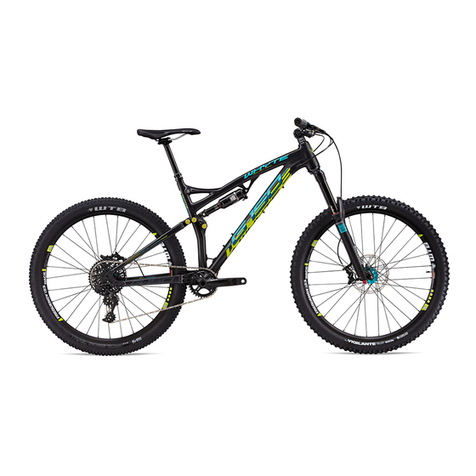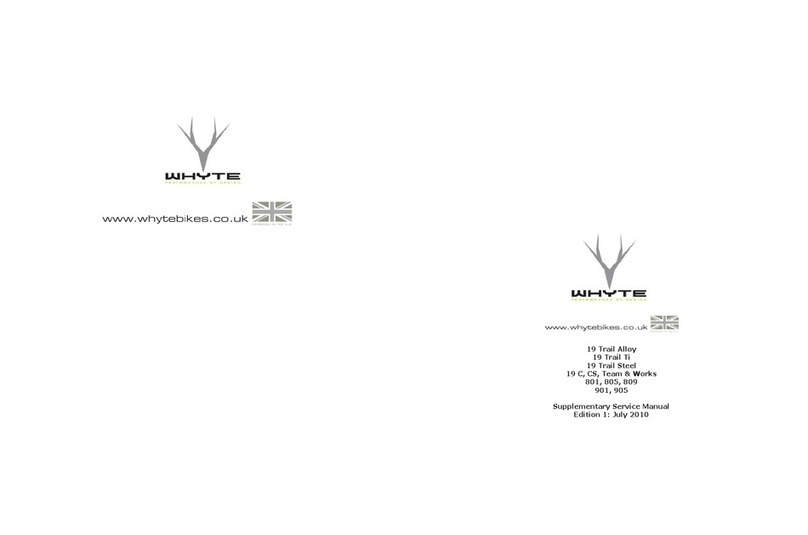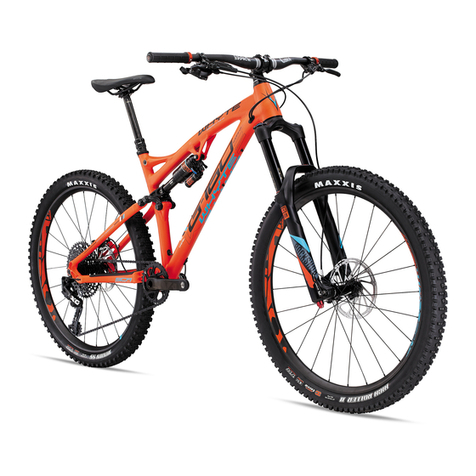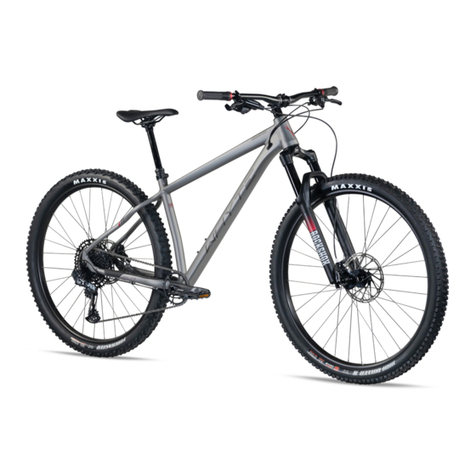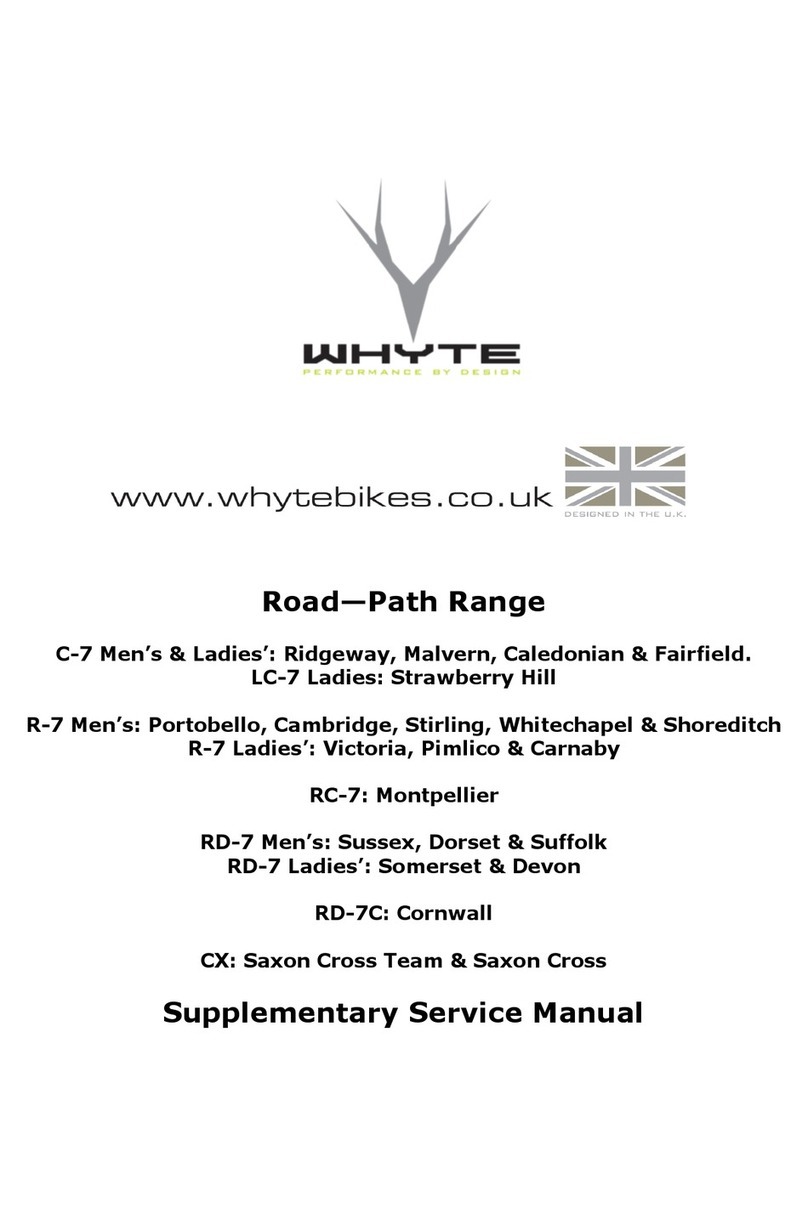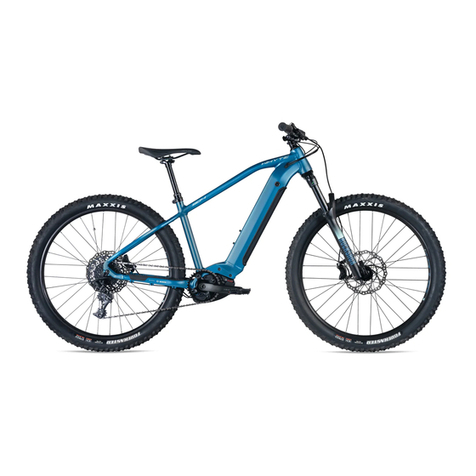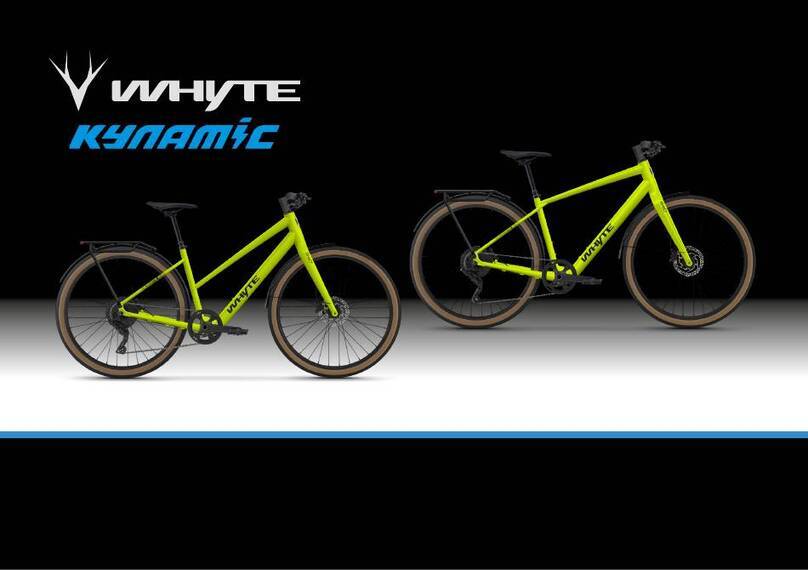age 8 General Instruction Manual
WARNING: A rim w ar indicator provid s an indication that
th wh l rim has r ach d its maximum usabl lif . Riding a
wh l that is at th nd of its usabl lif can r sult in wh l
failur , which can caus you to loos control and fall.
◊Brake function. Squeeze the brake levers. Can you apply full braking force at
the levers without having them touch the handlebar? Try to move the bike for-
wards with the brake levers squeezed. Are the wheels locked? If not, then the
brakes are not working properly. Do not ride the bike until you have consulted
your Whyte dealer.
◊Wheels attachment. Ensure the front and rear wheels are correctly secured to
the fork and frame, respectively (See also page 15).
◊Secure seat post. If your seat post has an quick-release clamp fastener for easy
height adjustment, check that it is properly adjusted and in the locked position
(See also page 6).
◊Handlebar and saddle alignment. Make sure the saddle and handlebar stem are
parallel to the bike’s center line and clamped tight enough so that you can’t
twist them out of alignment. If they are not, do not ride the bike until you have
consulted your Whyte dealer.
◊Handlebar grips are tight. Twist the handlebar grips to confirm they will not
move. Make sure there is a plug in each end of the handlebars.
WARNING: Loos or damag d st m, handl bars, grips or
xt nsions can caus you to los control and fall. Unplugg d
handl bars or xt nsions can cut you and caus s rious injury
in an oth rwis minor accid nt.
◊Condition of frame, handlebar and stem. Carefully inspect the frame, handlebars
and stem for signs of fatigue: scratches, cracks, dents, deformation, or
discoloration. If any part shows signs of damage or fatigue, replace the part
before riding the bicycle.
◊Suspension settings. Check that the suspension components are adjusted to suit
your riding style. Suspension should not be so compressed that there is no
further suspension movement remaining, as this could damage your bicycle and
make the bike difficult to ride (See page 27).
◊Condition of reflectors, lights and bell. For reflectors and lights to work effec-
tively, they must be clean. Check batteries are charged, if fitted in lights. Ring
the bell to make sure it works.
Load Limits
Whyt mountain bik s are intended for a maximum rider weight of 110 kgs, the
overall weight of bike incl. rider should not exceed 119-128kgs (depending on bike
weight).
Whyt road bik s are intended for a maximum rider weight of 110 kgs, the overall
weight of bike incl. rider should not exceed 117-120kgs (depending on bike weight).
